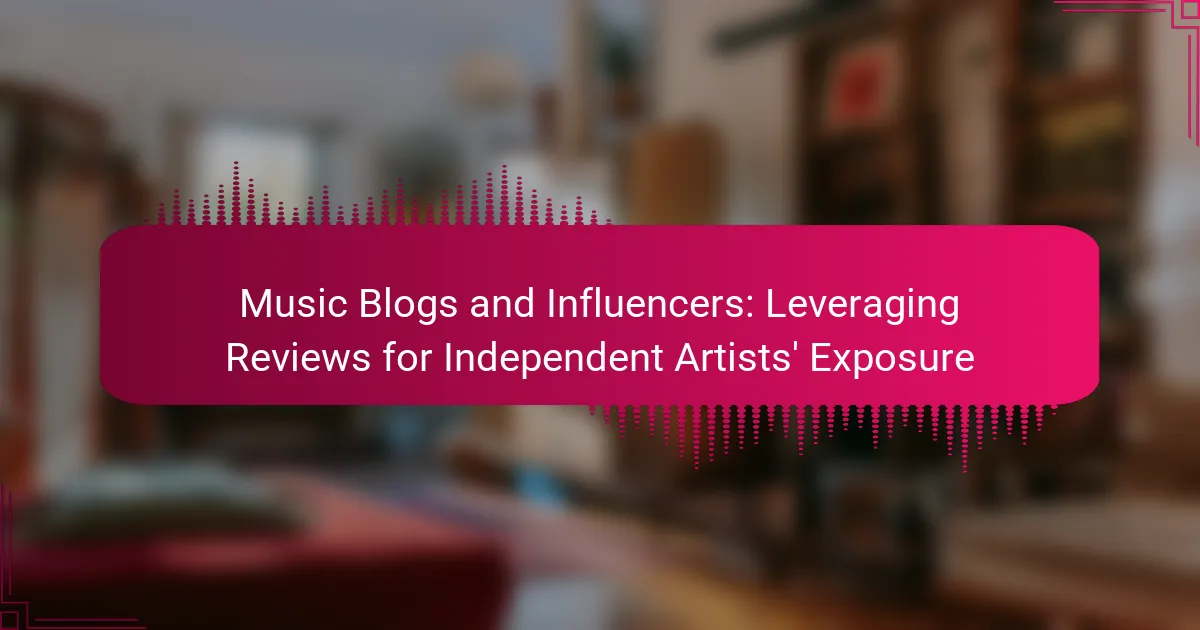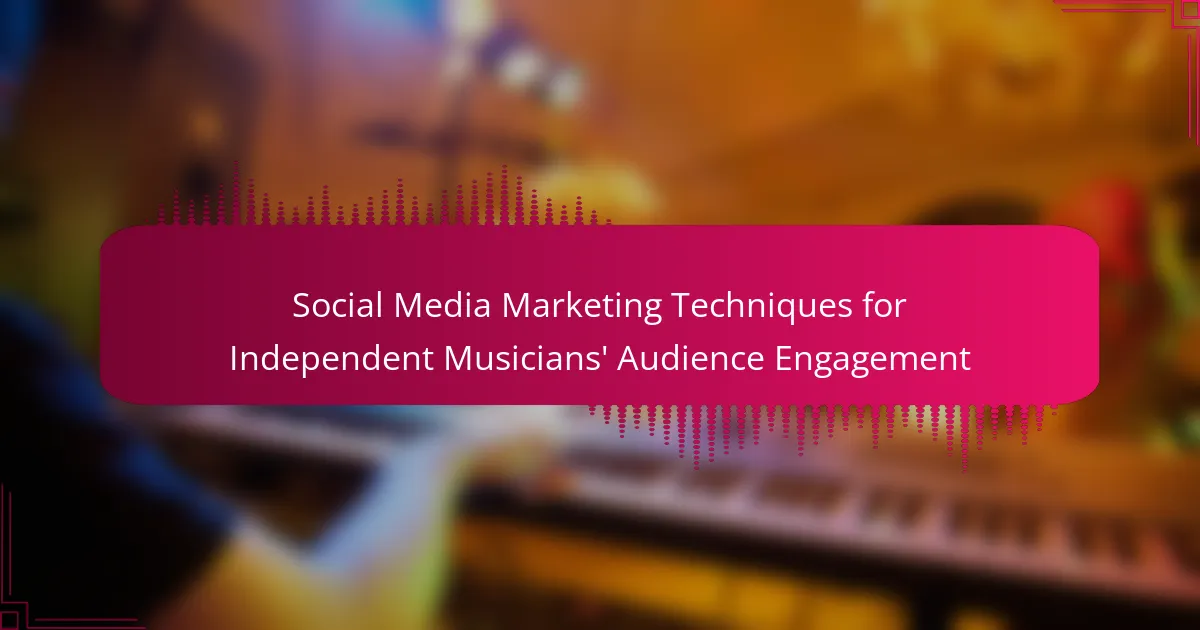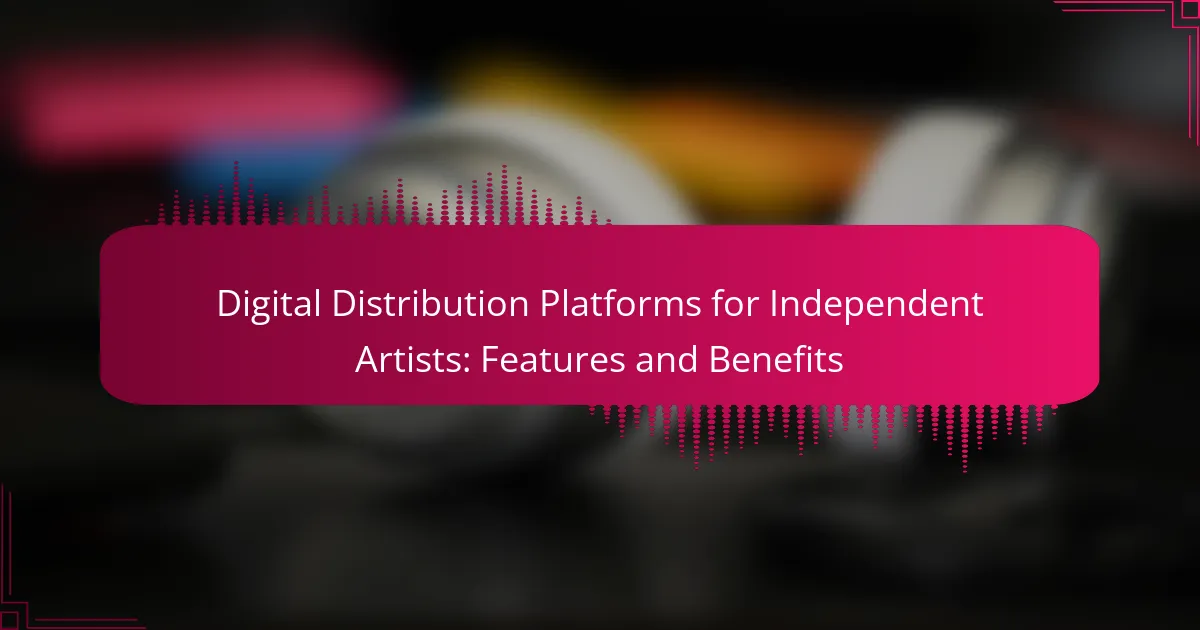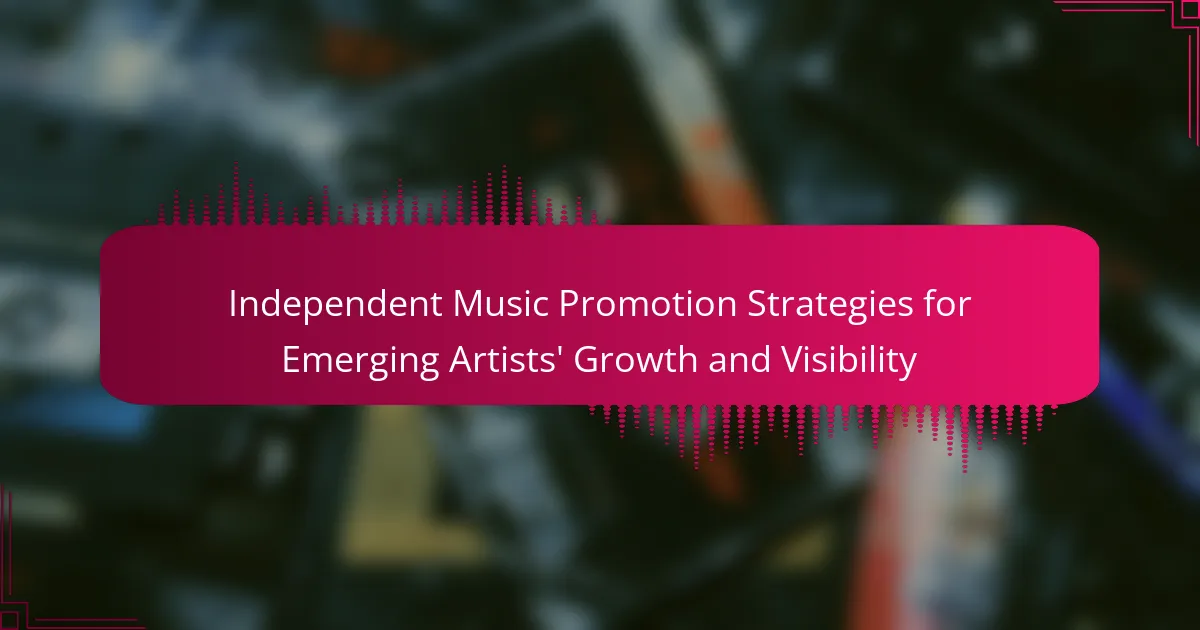Collaborations in independent music provide artists with increased exposure, access to diverse audiences, and enhanced creativity. Effective approaches include clear communication, leveraging social media, and establishing mutual goals. Cultural differences enrich these partnerships, leading to innovative sounds and broader appeal. Additionally, unique collaboration models like cross-genre projects and artist collectives foster community engagement and artistic growth.
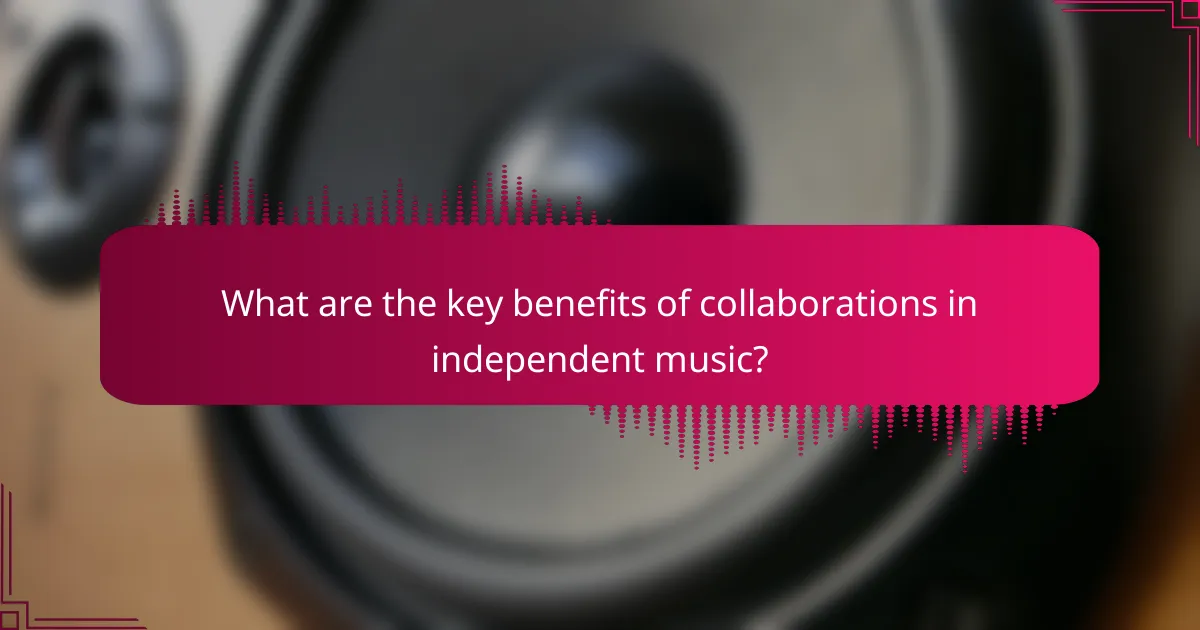
What are the key benefits of collaborations in independent music?
Collaborations in independent music offer significant benefits, including increased exposure, access to diverse audiences, and enhanced creativity. These partnerships allow artists to share resources and skills, resulting in innovative music that resonates with listeners. Collaborations can also lead to networking opportunities, fostering connections that may lead to future projects. Additionally, they can enhance marketing efforts, as combined fan bases amplify promotional reach.
How do collaborations enhance creativity and innovation?
Collaborations enhance creativity and innovation by blending diverse perspectives and skills. This synergy fosters unique ideas and solutions, driving artistic growth. Collaborative projects often lead to experimental sounds and styles, pushing boundaries in independent music. For example, partnerships can introduce fresh influences, expanding an artist’s reach and audience engagement.
What role do collaborations play in expanding audience reach?
Collaborations significantly enhance audience reach in independent music by leveraging diverse fan bases. Artists can access new listeners, increase visibility, and create unique content that resonates across multiple demographics. Collaborations often lead to shared marketing efforts, amplifying promotional reach. As a result, partnerships can foster community engagement and drive listener loyalty.
How can collaborations lead to financial benefits for independent artists?
Collaborations can significantly enhance financial benefits for independent artists through shared resources and expanded audience reach. By partnering with other musicians, artists can pool budgets for marketing, production, and distribution, reducing individual costs. Collaborations often lead to cross-promotion, where each artist introduces their fan base to the other’s work, potentially increasing sales and streaming revenue. Additionally, joint projects can attract sponsorships and grants that may not be available to solo acts, providing further financial support. Engaging in collaborations also opens opportunities for live performances, festivals, and merchandise sales, creating multiple revenue streams.
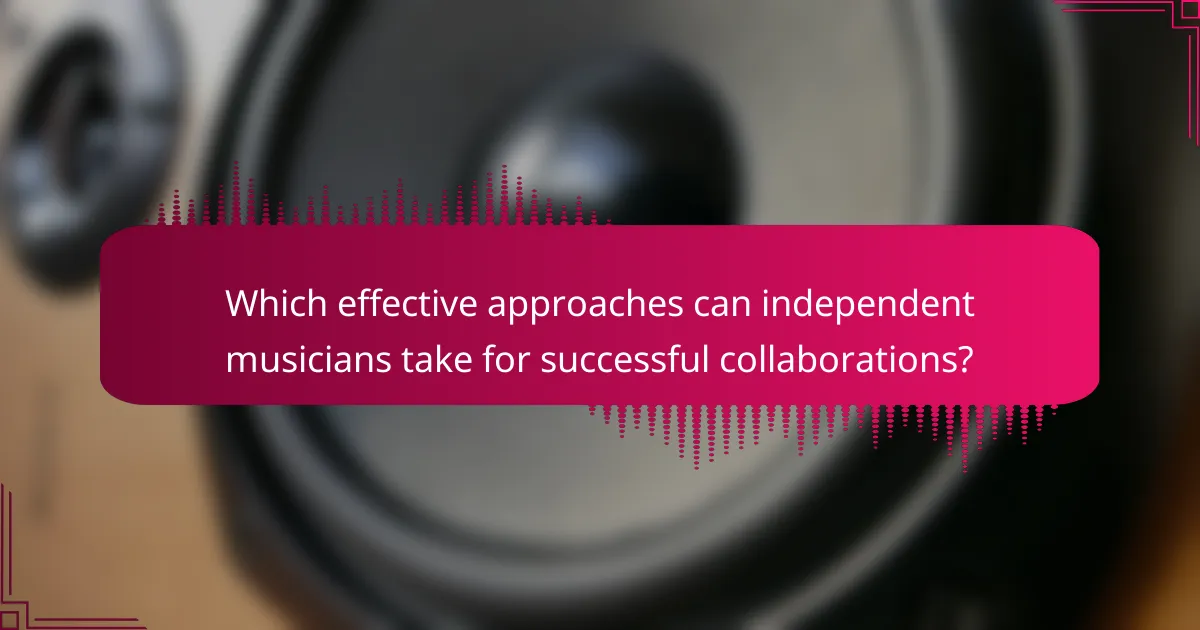
Which effective approaches can independent musicians take for successful collaborations?
Independent musicians can enhance their collaborations by focusing on clear communication, leveraging social media, and building a diverse network. Establishing mutual goals is crucial for aligning expectations. Collaborating with artists from different genres can lead to innovative sounds. Additionally, utilizing platforms like Bandcamp and SoundCloud can showcase collaborative work effectively.
What strategies can artists use to find suitable collaboration partners?
Artists can find suitable collaboration partners by networking, leveraging social media, and attending industry events. Building relationships with other musicians can lead to organic partnerships. Utilizing platforms like SoundCloud or Bandcamp can help artists discover like-minded individuals. Additionally, joining local music groups fosters connections within the community. Seeking collaborators with complementary skills enhances the creative process.
How can independent musicians effectively communicate and set expectations?
Independent musicians can effectively communicate and set expectations by establishing clear goals and open dialogue. Collaborations thrive on mutual understanding and respect. Regular check-ins and transparent feedback loops ensure all parties remain aligned. Setting deadlines and defining roles enhances accountability, fostering a positive working environment.
What platforms and tools facilitate collaboration in the music industry?
Digital platforms and tools like SoundCloud, Bandcamp, and Splice enhance collaboration in the music industry. These platforms enable independent artists to share, remix, and distribute music effectively. Additionally, collaboration tools such as Slack and Zoom facilitate communication among musicians, producers, and industry professionals. By leveraging these resources, artists can connect globally, share ideas, and work on projects remotely, significantly expanding their creative possibilities.

How do cultural differences influence collaborations in independent music?
Cultural differences significantly enhance collaborations in independent music by fostering creativity and innovation. Diverse backgrounds introduce unique perspectives, leading to fresh musical ideas and styles.
Collaborations can benefit from varied cultural influences, which may result in unique sounds that appeal to broader audiences. For example, blending traditional instruments from different cultures can create distinctive compositions.
Effective approaches include open communication and mutual respect, which help navigate potential misunderstandings. Artists should aim to learn about each other’s cultures, enhancing collaboration’s depth.
Ultimately, embracing cultural differences can lead to richer musical experiences and greater artistic growth.
What are the common challenges faced by artists from different backgrounds?
Artists from different backgrounds often face challenges such as communication barriers, cultural misunderstandings, and resource disparities. These issues can hinder collaboration and creativity. Effective approaches include fostering open dialogue, embracing diversity, and sharing resources to build a supportive network. Collaborative projects can benefit from diverse perspectives, enhancing artistic expression and innovation.
How can artists leverage cultural diversity to enhance their music?
Artists can leverage cultural diversity by collaborating with musicians from different backgrounds. This approach enriches music by blending unique sounds and perspectives, enhancing creativity and appeal. Collaborations foster innovation, allowing artists to experiment with diverse genres and styles. By integrating various cultural elements, musicians can reach broader audiences and create more relatable content. This practice not only promotes inclusivity but also reflects the global nature of contemporary music.
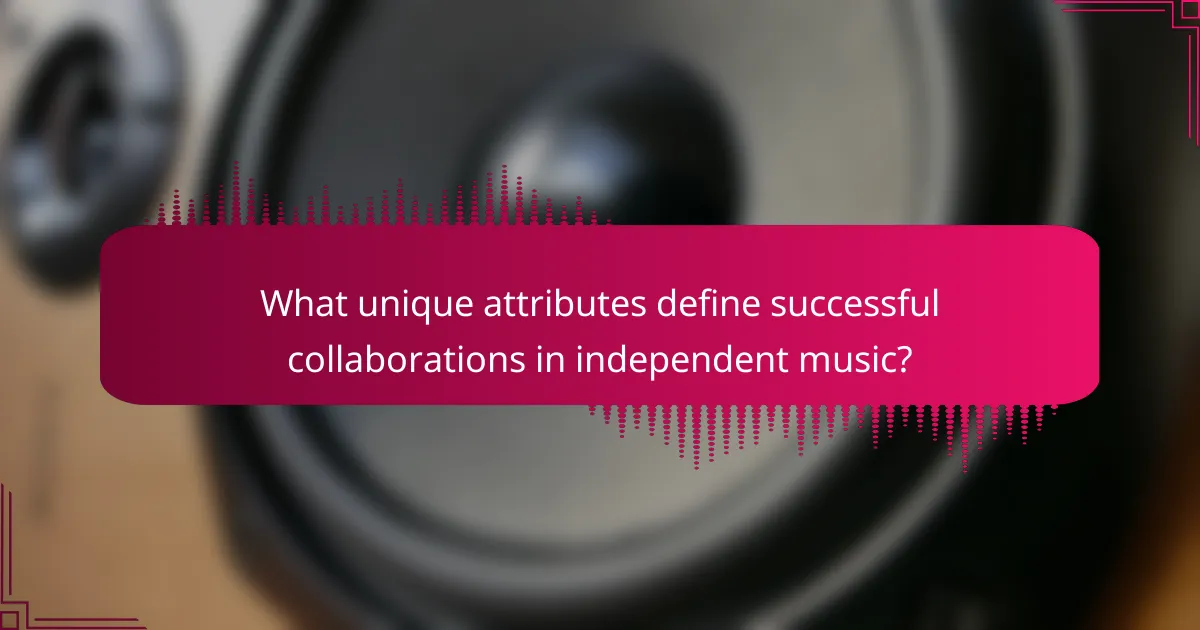
What unique attributes define successful collaborations in independent music?
Successful collaborations in independent music are defined by shared vision, mutual respect, and complementary skills. These unique attributes foster creativity and innovation, leading to distinctive sound and artistic growth. Collaborators often bring diverse influences, enhancing the overall quality of the music. Additionally, effective communication and flexibility are essential, allowing artists to navigate challenges and leverage each other’s strengths.
How do genre-specific collaborations differ in their approaches?
Genre-specific collaborations in independent music vary significantly in their approaches. They often reflect the unique characteristics and expectations of each genre.
For instance, rock collaborations may prioritize live performances and raw energy, while electronic music partnerships often focus on production techniques and sound design. In hip-hop, collaborations frequently emphasize lyrical exchanges and storytelling, whereas folk collaborations might highlight acoustic instrumentation and vocal harmonies.
These differences shape not only the creative process but also the marketing strategies and audience engagement methods employed by the artists involved.
What innovative formats are emerging in collaborative projects?
Innovative formats in collaborative projects include virtual reality experiences, interactive livestreams, and multimedia storytelling. These formats enhance engagement and creativity among artists. For example, virtual reality allows immersive collaboration, enabling artists to create shared environments. Interactive livestreams foster real-time audience participation, making collaborations more dynamic. Multimedia storytelling combines various media forms, enriching narratives and expanding reach.
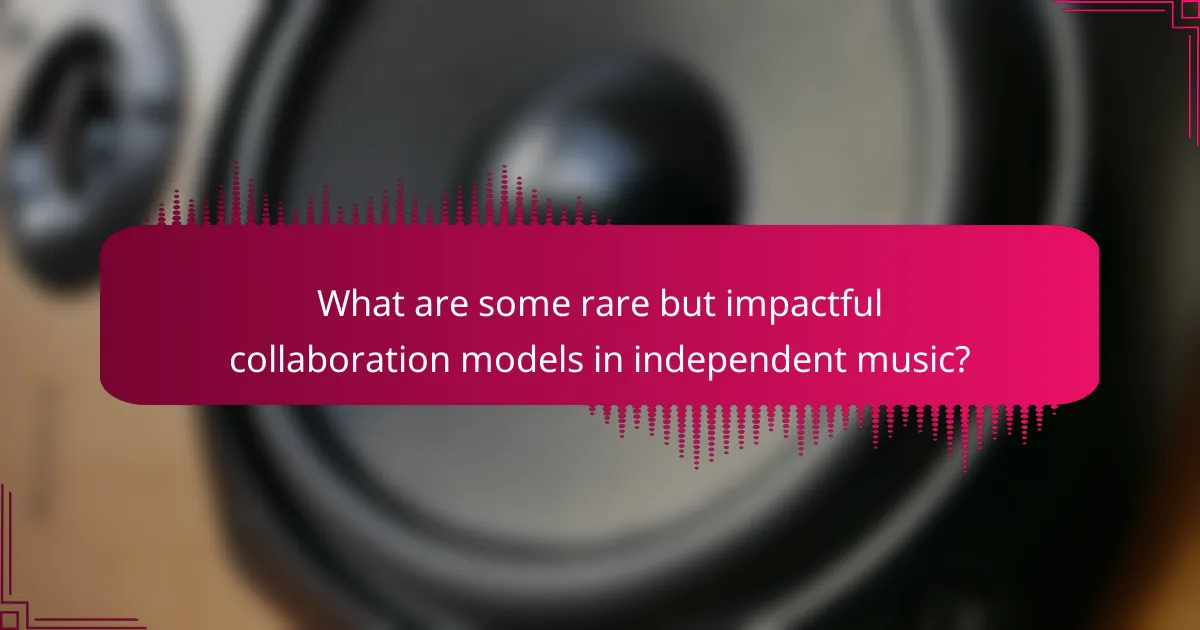
What are some rare but impactful collaboration models in independent music?
Rare but impactful collaboration models in independent music include cross-genre projects, community-driven initiatives, and artist collectives. These models foster innovation and broaden audience reach.
Cross-genre projects combine diverse musical styles, creating unique soundscapes. For instance, a folk artist collaborating with a hip-hop producer can attract fans from both genres.
Community-driven initiatives involve local artists collaborating on projects that reflect regional culture. This model strengthens local music scenes and promotes grassroots support.
Artist collectives allow independent musicians to pool resources, share expertise, and collaborate on larger projects. This model enhances visibility and creates a supportive network.
These collaboration models emphasize creativity, resource-sharing, and community engagement, showcasing the potential of independent music.
How can cross-industry partnerships benefit independent musicians?
Cross-industry partnerships can significantly enhance opportunities for independent musicians by expanding their reach and resources. Collaborations with brands, businesses, or other artists can lead to increased visibility, access to new audiences, and shared marketing efforts.
For instance, partnering with a fashion brand can provide promotional platforms at events, while collaborations with visual artists can enhance music videos and live performances. These partnerships often result in unique content that attracts attention and engagement.
Additionally, cross-industry alliances can facilitate access to funding and sponsorships, which are crucial for independent musicians. By aligning with businesses that share similar values, musicians can tap into additional financial resources and support networks.
Overall, effective cross-industry partnerships can create a mutually beneficial ecosystem, enhancing creativity and fostering innovation within the independent music scene.
What are the benefits of international collaborations for local artists?
International collaborations provide local artists with exposure to diverse audiences, access to new resources, and opportunities for skill enhancement. These partnerships foster creativity and innovation, allowing artists to blend cultural influences and expand their artistic horizons. Collaborations can lead to increased visibility and potential financial support, ultimately benefiting the local art scene. Additionally, artists gain networking opportunities that can result in future projects and collaborations.
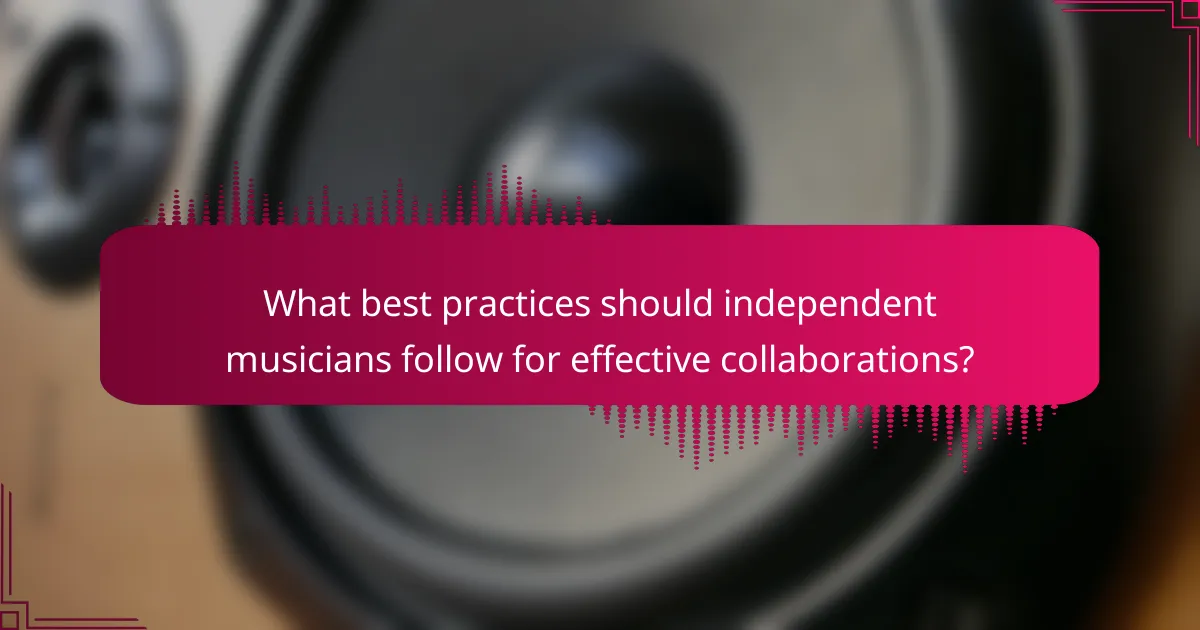
What best practices should independent musicians follow for effective collaborations?
Independent musicians should prioritize clear communication, mutual respect, and shared goals for effective collaborations. Establishing a common vision enhances creativity and cohesion.
1. Define roles and responsibilities early to avoid misunderstandings.
2. Set realistic timelines to keep the project on track.
3. Use collaborative tools for seamless communication and file sharing.
4. Be open to feedback and adapt ideas to enrich the collaboration.
5. Celebrate successes together to strengthen relationships and encourage future projects.
What common mistakes should artists avoid when collaborating?
Artists should avoid poor communication, lack of clarity on roles, not setting deadlines, and ignoring creative differences. These mistakes can hinder collaboration and reduce the overall quality of the project. Establishing open dialogue, defining responsibilities, and respecting artistic visions are essential for successful partnerships.
How can musicians ensure a mutually beneficial outcome in collaborations?
Musicians can ensure mutually beneficial outcomes in collaborations by establishing clear communication and shared goals. Open dialogue about expectations fosters trust and creativity.
Additionally, defining roles and responsibilities enhances accountability. Regular feedback sessions allow for adjustments, ensuring all parties feel valued.
Lastly, celebrating successes together strengthens relationships and encourages future collaborations. This approach maximizes the potential of each partnership.
What expert tips can enhance the collaborative process in independent music?
Collaborative processes in independent music can be enhanced by fostering open communication, establishing clear goals, and embracing diversity in creative input. Building strong relationships among artists promotes trust and encourages risk-taking. Regular feedback sessions can refine ideas and strengthen the final product. Utilizing digital tools for collaboration can streamline workflows and enhance accessibility. Engaging in joint marketing efforts expands audience reach and maximizes impact.
